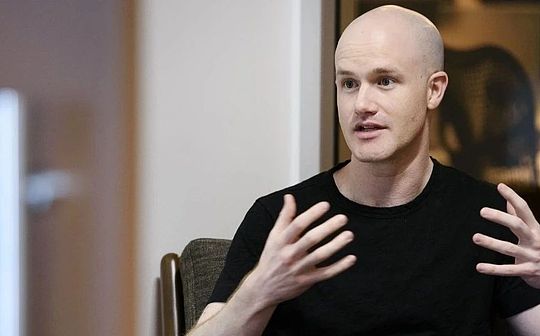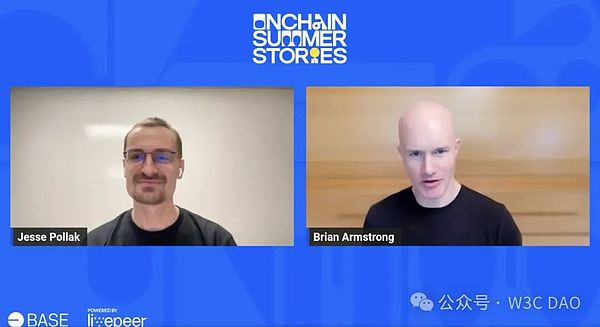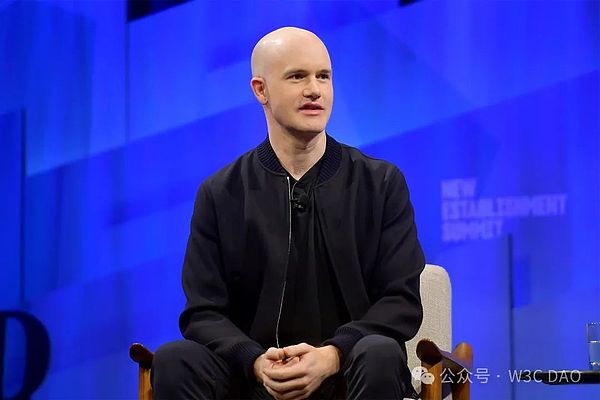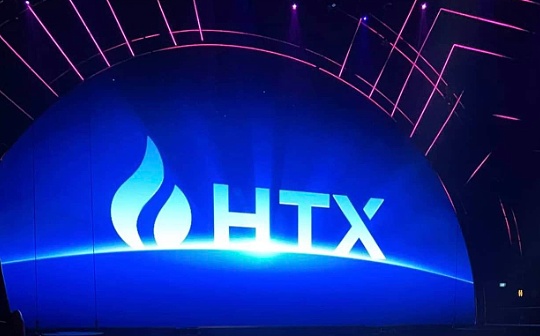
Compiled: Kaori, BlockBeats
In this conversation, Coinbase’s co-founder and CEO Brian Armstrong talked with Jesse Pollack, head of Base Agreement, about how to promote innovation and development in the blockchain field.Brian shares his unique perspective as an engineer and CEO, discussing Coinbase’s efforts to help developers and his outlook for on-chain development in the coming years.
Jesse Pollack: Hello everyone!Welcome back to Onchain Stories, a special episode hosted by me – Jesse Pollack, founder and person in charge of Base.Today we have the honor to invite Coinbase co-founder and CEO Brian Armstrong.Welcome, Brian.
Brian Armstrong: Hi Jesse, I’m happy to see you.
Jesse Pollack: Thank you for participating in this conversation and inspiring developers, let’s start from scratch.Ten years ago, you and Coinbase have been working on making cryptocurrencies easier to use.Can you tell me what you think?How far have we gone now?What is the user experience on the chain today?
Brian Armstrong:Yes, we did make a lot of progress, but I think we still have a long way to go.At the beginning, we were thinking about some simple questions, such as how to send Bitcoin to an email address.
I remember in 2012 we were developing an early prototype of Coinbase, inspired by PayPal – sending money via email, maybe we could apply this system to bitcoin.
At that time, we just wanted to solve some very basic problems, such as storing Bitcoin with username and password, without having to run nodes on a laptop. These were very basic things at the time.

But we did make some progress over time.For example, now we don’t have to send long addresses that look like passwords anymore, we can send ENS IDs, which are human-readable rather than machine-readable, which is great.Layer 2 is also a big progress, and Base is an important part of it, but there are many Layer 2 solutions like Lightning Network that are working to make this process easier.
We need faster confirmation times and lower fees, but I think we still have a long way to go.One of the big problems is that cross-chain asset transfer is still difficult.It is unclear how to transfer assets between L1 and L2, or between different L2s.
There are a lot of jokes about this on social media, such as, is my USDC on Ethereum or on some L2?There are so many icons that I feel we need to find a way to make these seamless in the background so that people don’t even need to know which chain they are on.
Perhaps there can be some kind of handshake agreement between the sender and the recipient, such as “I have it, what do you accept”, and then the exchange will be automatically completed on the DEX.Such a mechanism may be helpful.My standard is like Apple Pay, where you can pay with your phone on your point of sale device.
How can we reach this level?For example, pay between two mobile phones, or scan the code to pay in an e-commerce environment.In Coinbase Commerce, we have been working hard to achieve the world of “one-click magic checkout” and make cryptocurrencies the easiest way to pay.
We are not fully equipped for L2 work, and we need to debug some APIs built into the hardware and mobile phones, which may involve many details such as NFC.But I think we are gradually approaching our goal, which requires the hard work of many smart people.
Jesse Pollack: Yeah, that’s right.This summer, many people have been building on the chain for the first time, and some have been in this field for a long time.Do you have any expectations for this summer on-chain building marathon and some of the projects currently built on-chain?

Brian Armstrong: Yes, I have a few thoughts in my mind.Of course, I’m not the referee for these good ideas, and I’m often shocked by the creativity proposed by the community.We often talk about these things like Legos that start to put together.For example, we have ENS, stablecoins, L2, identity, NFT and social networking.
Another thing I think may be missing is the reputation system on the chain.You can imagine a version that uses the graph structure of the chain to represent the trust relationship. For example, if I trust this node, they send funds to another node, which implies a certain degree of trust, similar to Google PageRank’s algorithm, this kind of thing isOn-chain builds would be cool.
Another thing I’ve been thinking about is that in Web2, the biggest business model is advertising.We don’t want to repeat all the errors in Web2, but how to implement distribution in Web3 is an interesting question.You can imagine an ad network or Google Adwords equivalent, but not just paid for clicks (CPC), you can pay for an action.
You can imagine a world where smart contracts or dApps expose some metadata, for example, if you recommend a user to call this feature, passing your recommended ID or address, you will receive a 1% reward.You can promote different rates people are willing to offer, which can be displayed in various wallets or distribution areas.
Jesse Pollack: So I think we might see the ad network growing in this dimension.Let me ask another question I have been thinking about, that is, the P2P deposit and withdrawal on the chain.Many emerging markets need to transfer funds into and out of the platform, and these centralized versions are often shut down or under pressure.If we can do all this on-chain, such as dispute resolution, mediation, rating and comment systems, and build more on-chain systems like this, these markets will become more resilient and global.These are some ideas I’ve been thinking about, but I’m looking forward to seeing what ideas people will have.
Brian Armstrong: What excites me is that the technology was always not ready before, we didn’t have the right components, the chain was too expensive, we didn’t have anything like ENS, and the wallet was too difficult to use.But now it feels like we finally have these components, which will make the next wave of application cases possible.For example, now you can really build reputation systems, advertising networks, or deposit and withdrawal systems, and they are cheap enough to be easy for everyone to use.
I have two ideas, the first is that the technology is finally ready to support reputation systems, advertising networks and deposit and withdrawal systems.This will make these use cases cheap and accessible, making them accessible to everyone.
The second is that it’s very interesting to think about how these things really come together.To have a good advertising network, you need to know if the person involved and seeing the ad is real, that is reputation.To have a good P2P network, you need to know whether the people on the network are good actors, which is also reputation.
So I think we are at the stage where the on-chain infrastructure has been built, but we are starting to see opportunities for this application-level identity infrastructure that will support P2P, advertising and better commerce, thusHelp the world go up the chain.
Jesse Pollack: I know you are increasingly involved in Coinbase, making it easier for people to go on the link, not only from the user’s perspective, but also from the developer’s perspective.I know you are an engineer myself, can you talk to us about what Coinbase is doing now to help developers and what drives you to invest your time and energy?
Brian Armstrong: Well, if you haven’t checked it yet, you should check out the CDP, Coinbase Developer Platform.The URL is cdp.coinbase.com.We are trying to provide many of the tools built in Coinbase to third parties to build their applications.
We have built a lot of things over the years, whether it’s a simple way to store cryptocurrencies, or staking, trading, or even indexing large amounts of NFTs or handling ENS and different assets.Hopefully we can reduce the workload of developers and provide these features through very easy-to-use APIs.

Jesse, you posted a great video about a lot of on-chain builder tools.We have included Base nodes and Paymaster features to make fees have no impact on your customers at all.Obviously, the smart wallet launched yesterday was also a big event.I think now we see that users do not need to use 12-word mnemonics to enter, but use biometrics or YubiKey to enter with one click, so that the use and entry of the wallet becomes much easier.
I’m very enthusiastic about this and I think Coinbase has a great opportunity to help thousands of developers build applications, which is one of the reasons I’ve been deeply involved in the Coinbase developer platform CDP product and try to see how we can make it easier to use.
As a developer, I always like those magical moments, like the first demo of using Ruby on Rails, when I could create a blog in five minutes with features like live comments and RSS feeds, which makes me feelAmazed.These tools increase productivity.We hope to be able to provide developers with a range of such tools that make it easier for them to start and lower the barriers to innovation.
Jesse Pollack: Totally agree, if you don’t know, Brian was an engineer when he founded Coinbase, and he is still an engineer now.We recently had a three-day weekend, which is Memorial Day.I received a message from Brian on Sunday, and he asked, “What is the best way to learn how to write a smart contract?” I recommended some resources to him, and later we discussed it in the message, and he said, “Can we program together.”? ” Then he spent his holidays writing smart contracts with Wilson Cusack.
I think it was very encouraging for me to be the CEO of a public company, Brian personally participated in writing smart contracts and improving developer tools.
PassIn the past year, almost no one thought Coinbase was doing anything for developers, but now Base is the leading L2 for developers, and the Coinbase Developer Platform is a very powerful developer tool where you can find everything you needLet’s start building on-chain applications.We’re just starting out and I think it all stems from having a leader like Brian who understands technology and can write code in person to make everything possible.
Brian Armstrong: Thank you for saying that, Jesse.I feel like my programming skills are declining every year, but hopefully my CEO skills are improving every year.I mainly want to lead the team by leading by example, and I have to learn these basics myself.Everyone feels a little scared when learning a new language or how to build an application.
This is a complex thing, so you have to learn with a beginner’s mindset and go through some setbacks. I also asked a lot of seemingly stupid questions.Thanks to Wilson Cusack for helping me with some pairing programming, which is very cool.In Singapore, some officials, such as the former Prime Minister, also wrote something on GitHub.This attempt to get to know the basics demonstrates good leadership within the company, and I think we need every Coinbase engineer to build on the chain and I can’t ask anyone else to do it if I don’t lead by example.
Jesse Pollack: Totally agree that your role model is being seen and felt, and that is changing the company.About a year ago, we didn’t have many developer products, and there weren’t many teams built on-chain within the company.But today, there are many teams built on-chain within Coinbase, and we say we want to build the world’s best smart contract on-chain engineering team.
If you asked us a year ago if we could do it, we might think it was crazy, but now we are gradually achieving this goal, challenging the boundaries of possibilities and setting an example for ourselves, our internal teams and the ecosystem as a whole,Showcase how big companies can improve their on-chain building capabilities.
I’m curious how you view the future on the chain in the next few years?How quickly do you think this will happen?
Brian Armstrong: I think these things always feel very gradual when they happen, but when you look back, they look abrupt.
People think the iPhone launch was a sudden turning point, from a historical perspective, but the people in it didn’t feel that way.After the iPhone was released, it had no app store even for a year or two, and it only ran on AT&T’s 3G network.So it felt very gradual at the time, and we only saw how huge these changes were afterwards.

I think we are at this turning point, but it feels gradual when we are in it.L2 is a huge advancement, which reduces friction in building different applications.What I’ve been thinking lately is how all these decentralized protocols are combined in on-chain superapps.We need moments like Netscape or iPhone, not just payments.
We see decentralized social media such as Farcaster on the rise, and interesting messaging applications such as XMTP are on the rise.How to embed these into people’s daily lives, such as their livelihoods, paying for basic daily necessities, daily operations, etc.Content creators, social media, journalism, and even the way organizations are created, voted and governed can all be affected.I find this very exciting.
If we can do this, there might be an on-chain superapp that brings these protocols together, which will be very interesting and I’m looking forward to seeing what you guys are doing.It does feel like all the infrastructure is in place, but the user experience hasn’t really brought them together yet, and there’s a big chance here.I look forward to continuing to build the developer and builder side content to see what Coinbase will do on the consumer side.
Jesse Pollack: One last question, we are doing a hackathon, with thousands of developers signing up for the summer build event.You are a very successful founder and have been doing it for a long time and I wonder what advice do you have for these developers who build in a build marathon?
Brian Armstrong: The early stage of innovation didn’t look glamorous, just a few people tickling in their apartments, which is exactly where Coinbase started, and some unsuccessful ideas I’ve tried in the past, which is the norm.
I remember my friends would call me and say, hey, come out for this party.I always answer, I don’t know, I just fiddled with my laptop at home alone.But at that time I didn’t feel like I was changing the world. In fact, most of the time I was worried about solving a bug, maybe because a semicolon was placed in the wrong place.
So many innovations are like this: you need to stick with it, allow yourself to be a beginner, allow yourself to slow down, and don’t understand how it works.If you are in the forefront, there will not be many operating manuals to refer to.
You can learn to make an LLM in five minutes, but if you really want to build something new, the material doesn’t exist.Therefore, you have to overcome these difficulties by perseverance.Perseverance may be the biggest determinant of entrepreneurship and building success.
I think a lot of startups, a few of their people gathered together to try something, and three months later, the first product launched didn’t work out, or there might be some internal partner disputes, and they just collapsed at the starting line.In my opinion, this approach has almost never been successful, and almost nothing can succeed with the first launch, which is very rare.
Coinbase’s first product was certainly unsuccessful, and you had to launch a very embarrassing version 1, releasing something that wasn’t actually ready.If you are not embarrassed by it, it means you have been waiting for too long.Many people simply cannot overcome the embarrassing level of launching products that feel slightly awkward, and ultimately never release anything.
Once you release version 1, no one cares, post it on Farcaster and find 10 people to check it out.Then you have to keep looping: talk to customers, improve the product, talk to customers, improve the product, continue to do this for two or three years, four years, ten years, etc., and there may be a breakthrough in the end.
This is the game of entrepreneurship, you don’t know if it will succeed.You have to be willing to enter unknown territory and keep trying enough ideas, and eventually something will succeed.And 99% give up, or they never started.This is the method.
Jesse Pollack: I love this summary, which is a great conclusion.If you are building, don’t give up, you are just on the first day.The most important thing is to stay determined, stay focused, keep your goals in mind, Stay Based.








